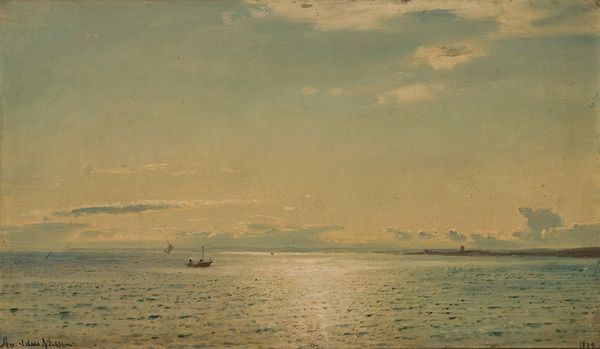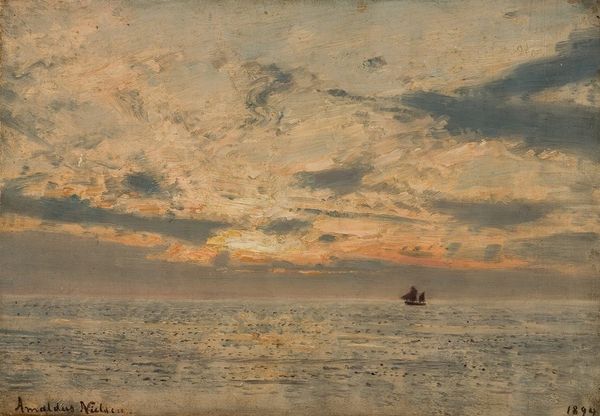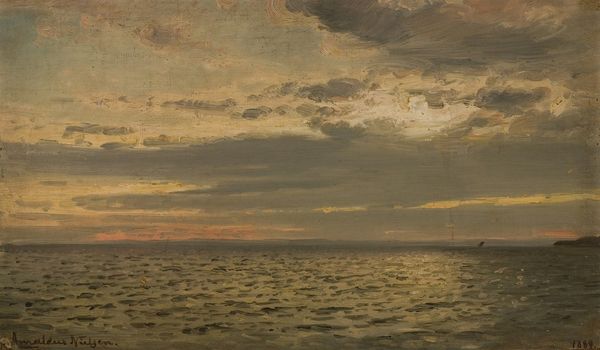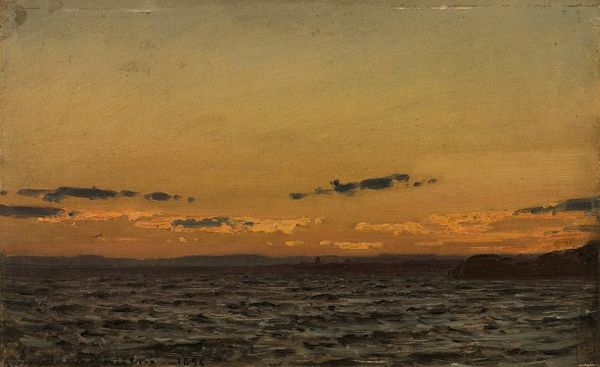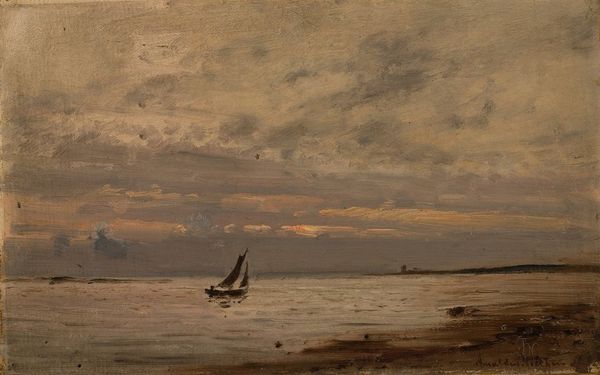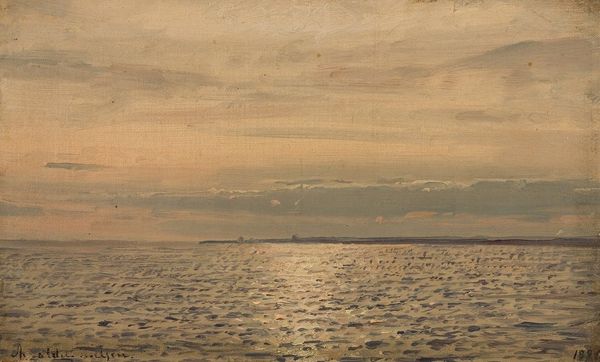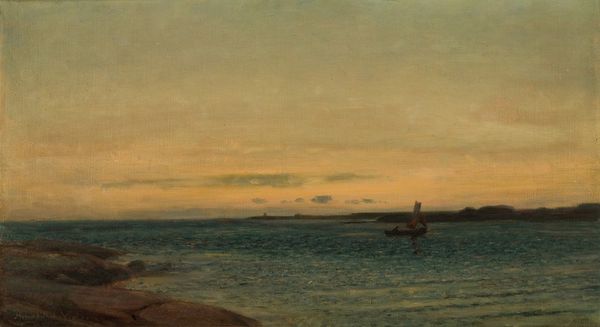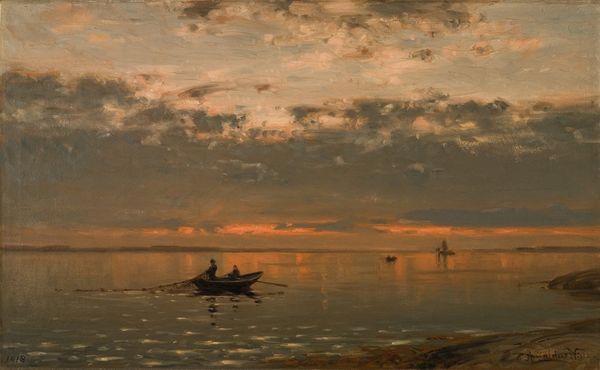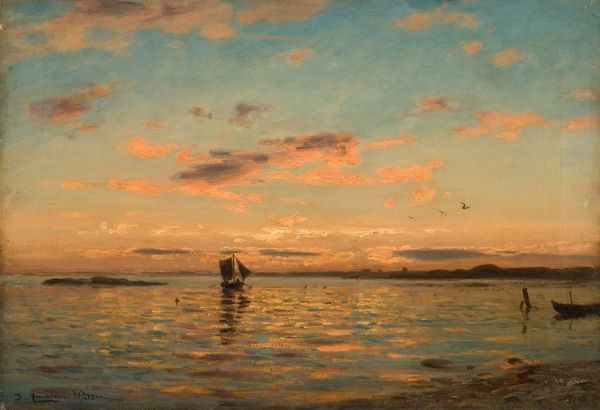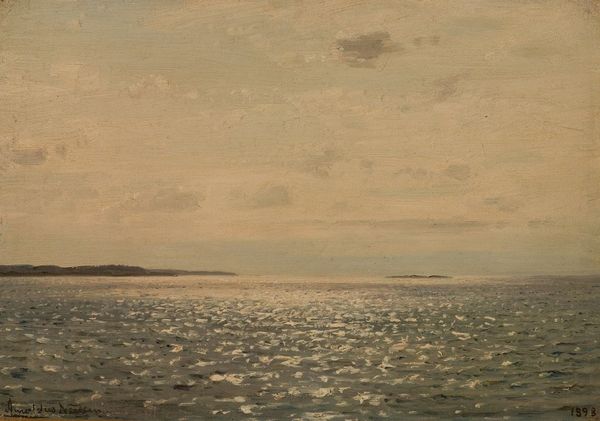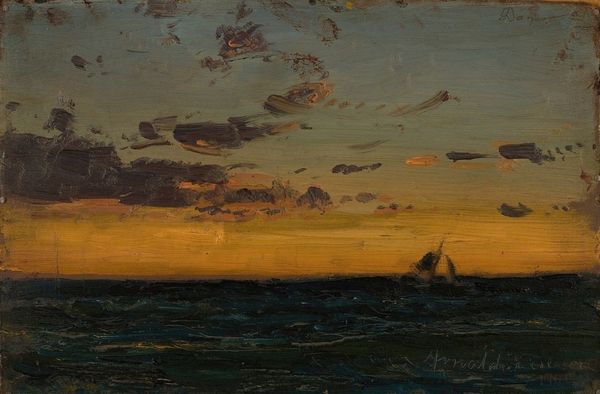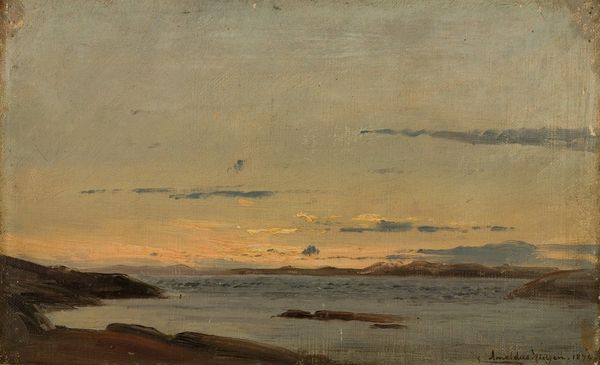
Copyright: Public Domain: Artvee
Editor: This is Amaldus Nielsen's "Etter solnedgang," painted in 1889. It appears to be an oil painting, and has a really calming effect, like I'm looking at the sea myself. How do you interpret this work? Curator: Well, consider that Nielsen was working en plein air. It's important to recognize this work isn’t just *of* a sunset, it's a product *of* that environment. The materiality of the paint, the brushstrokes... they’re all determined by the conditions. The light, the air, Nielsen's own physical interaction with the materials on the shore. Think about the labor involved in producing a painting like this – transporting materials, working outdoors. What social class might afford the time and means to create a painting 'in open air?' Editor: I hadn't thought about the practicalities so much. So the 'impressionistic' style isn't just about aesthetics but the actual physical experience? Curator: Precisely! The application of the oil paint reveals more than the visual phenomenon of light; it indexes the physical process, even a certain form of “production.” What impact does this 'plein air' inscription of nature have on you? Editor: I see what you mean. Knowing that it was made outside makes the materiality of the paint seem even more present, it does highlight how 'made' it is, rather than simply 'observed'. It makes you question what gets commodified in the making of the artwork? Curator: Exactly. We begin to challenge traditional art hierarchies by understanding the labour, the economic factors, and the materials inherent in creating a work of art that romanticizes nature. This brings into relief a history, no? Editor: Definitely, it opens up so many different ways of thinking about it, I’m not just looking at a sunset anymore!
Comments
No comments
Be the first to comment and join the conversation on the ultimate creative platform.
